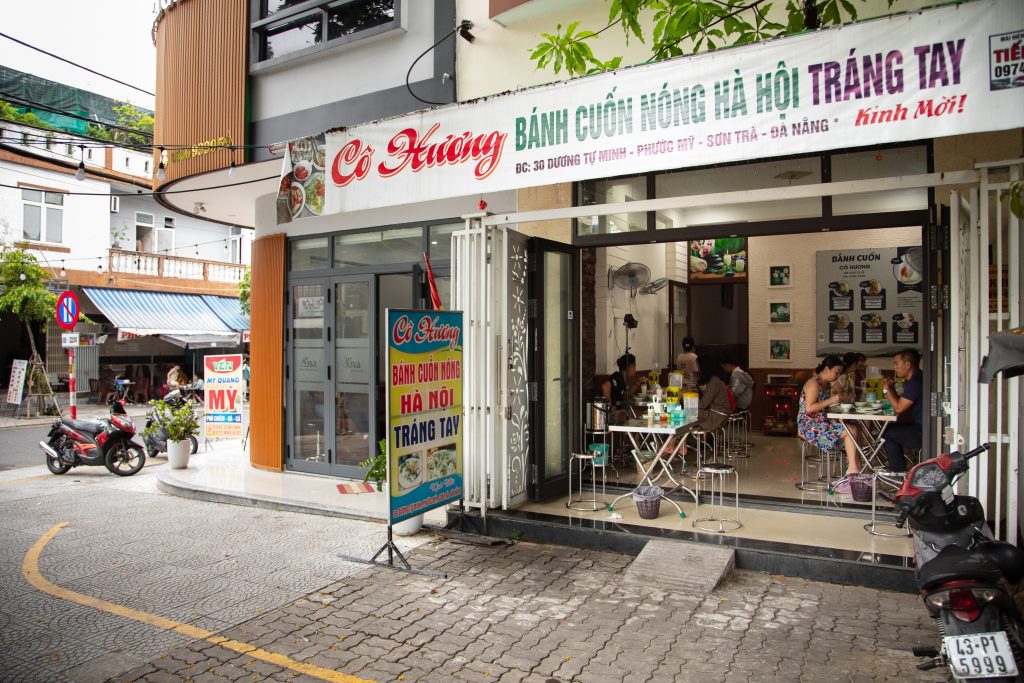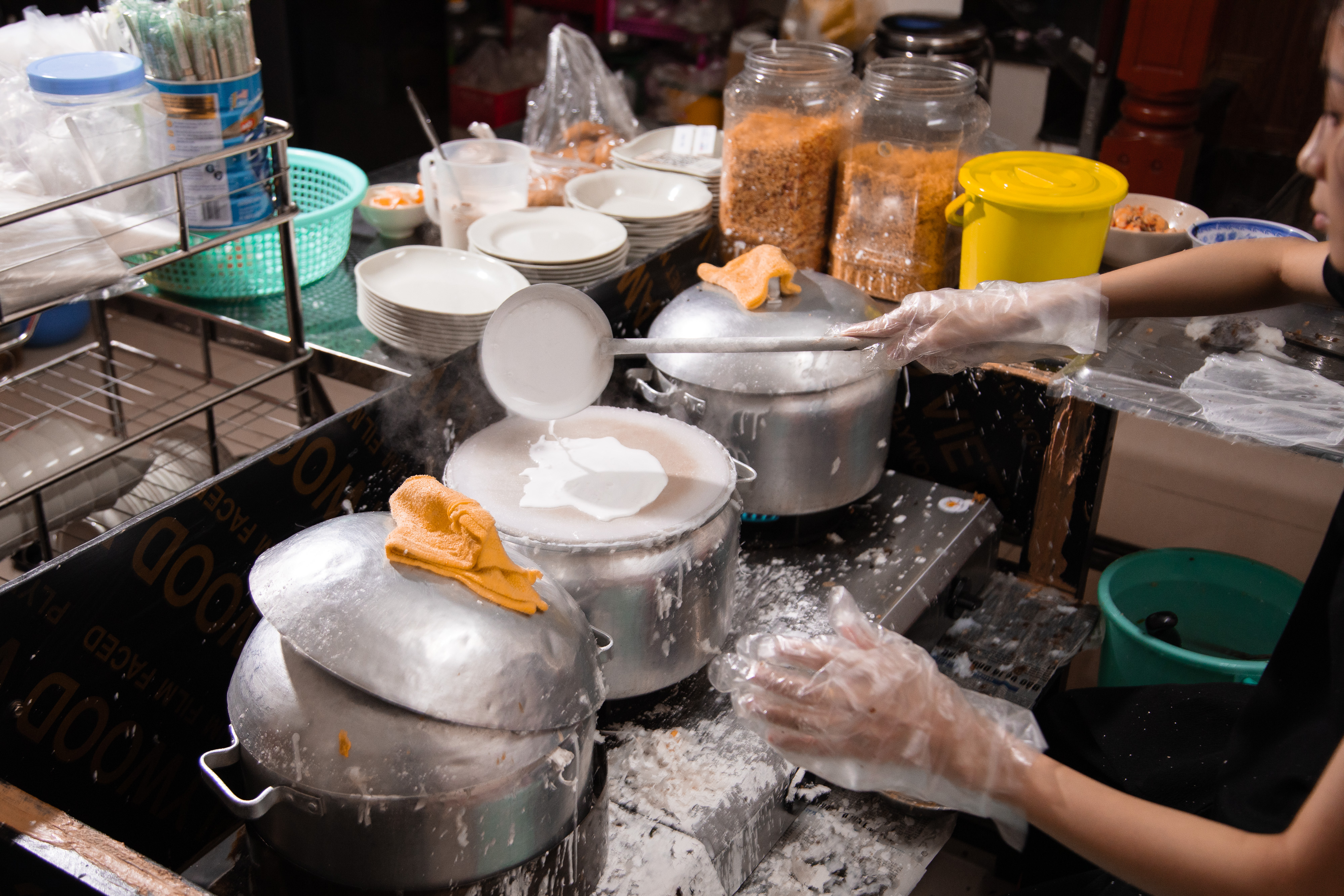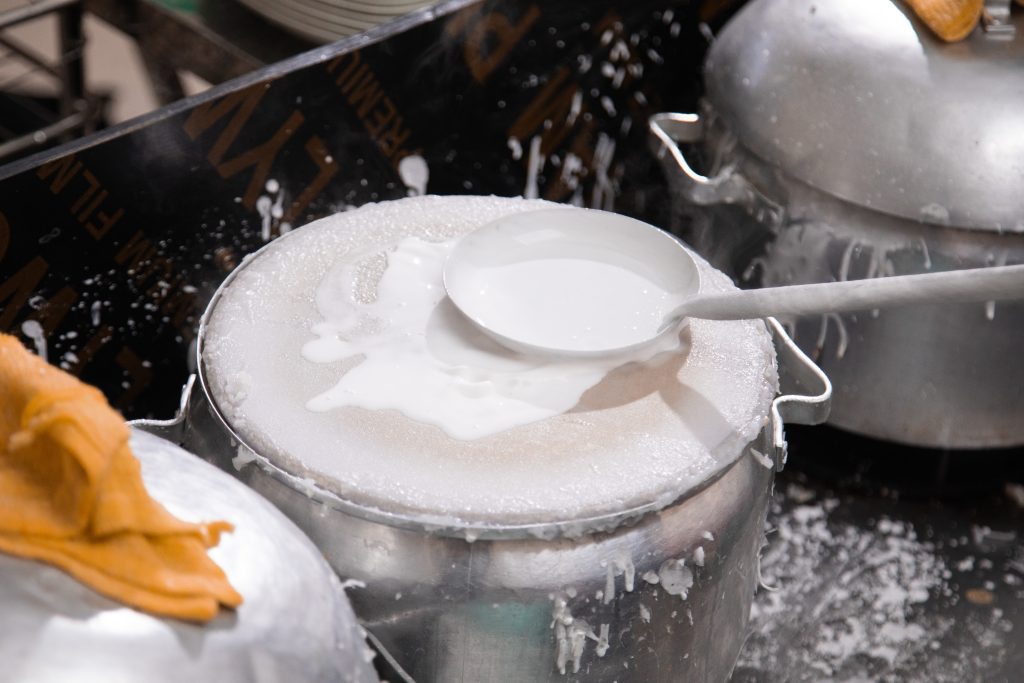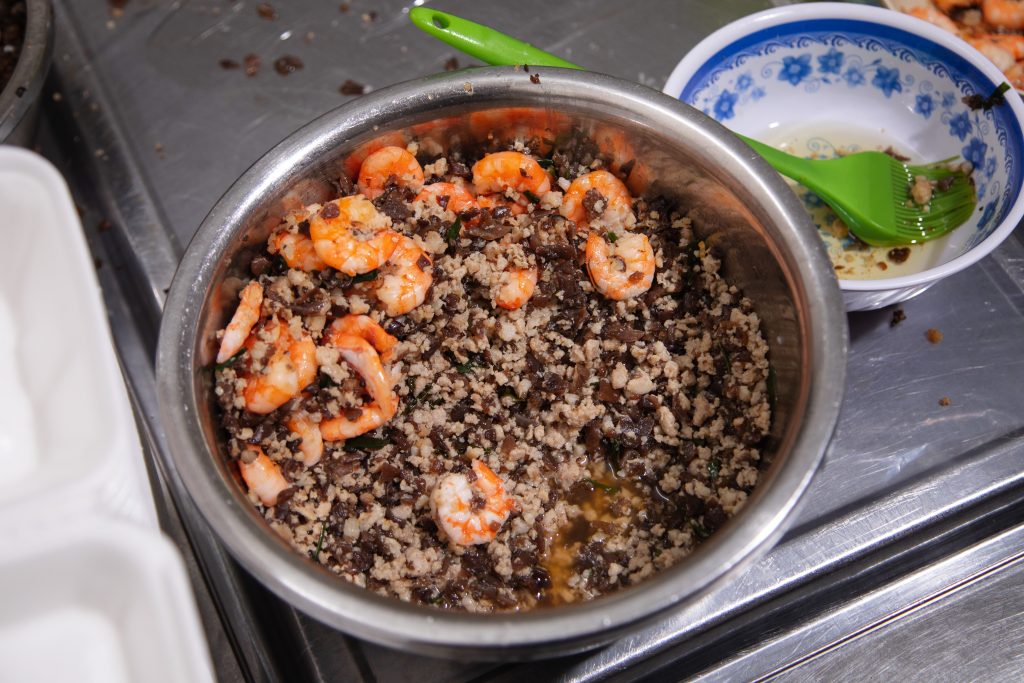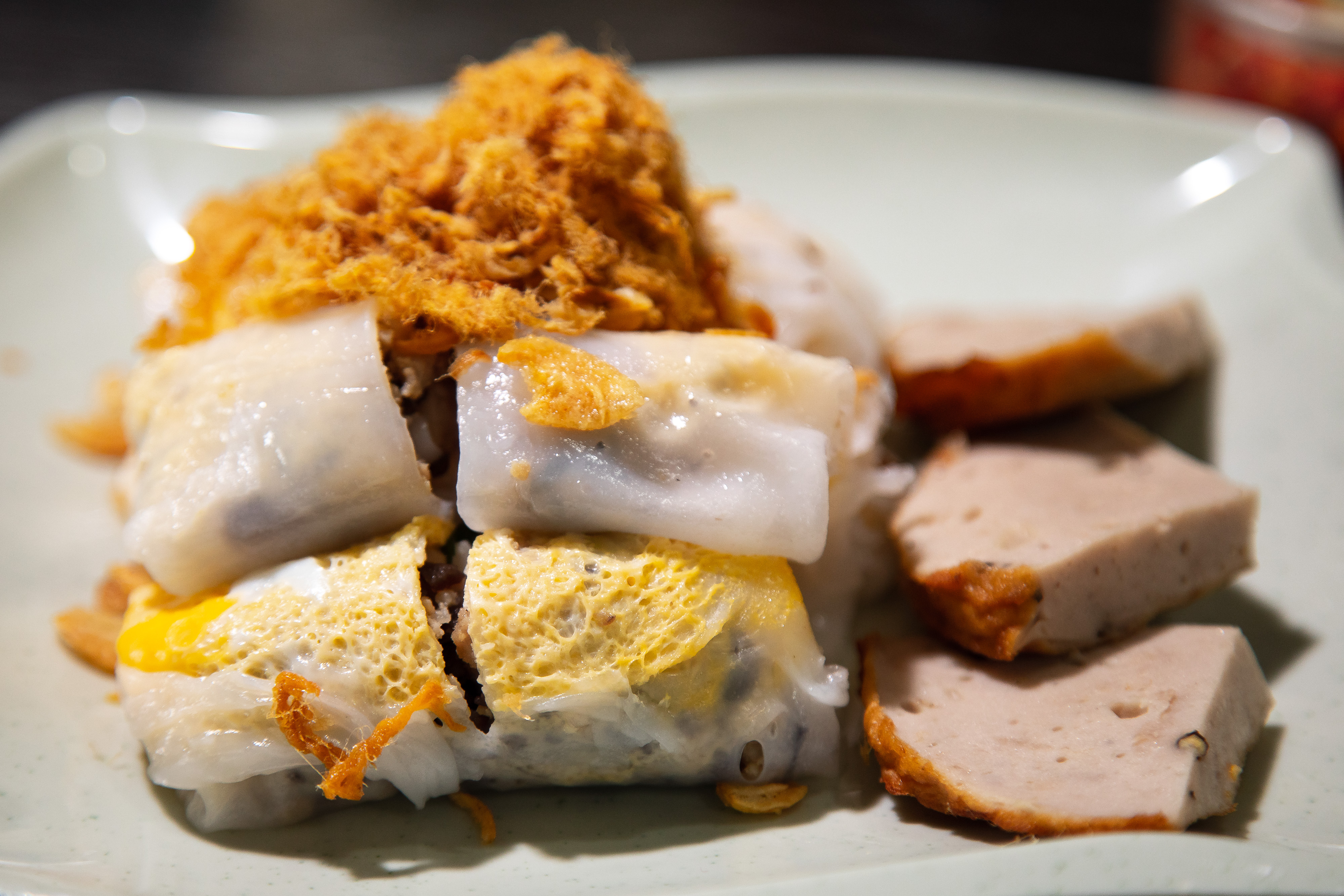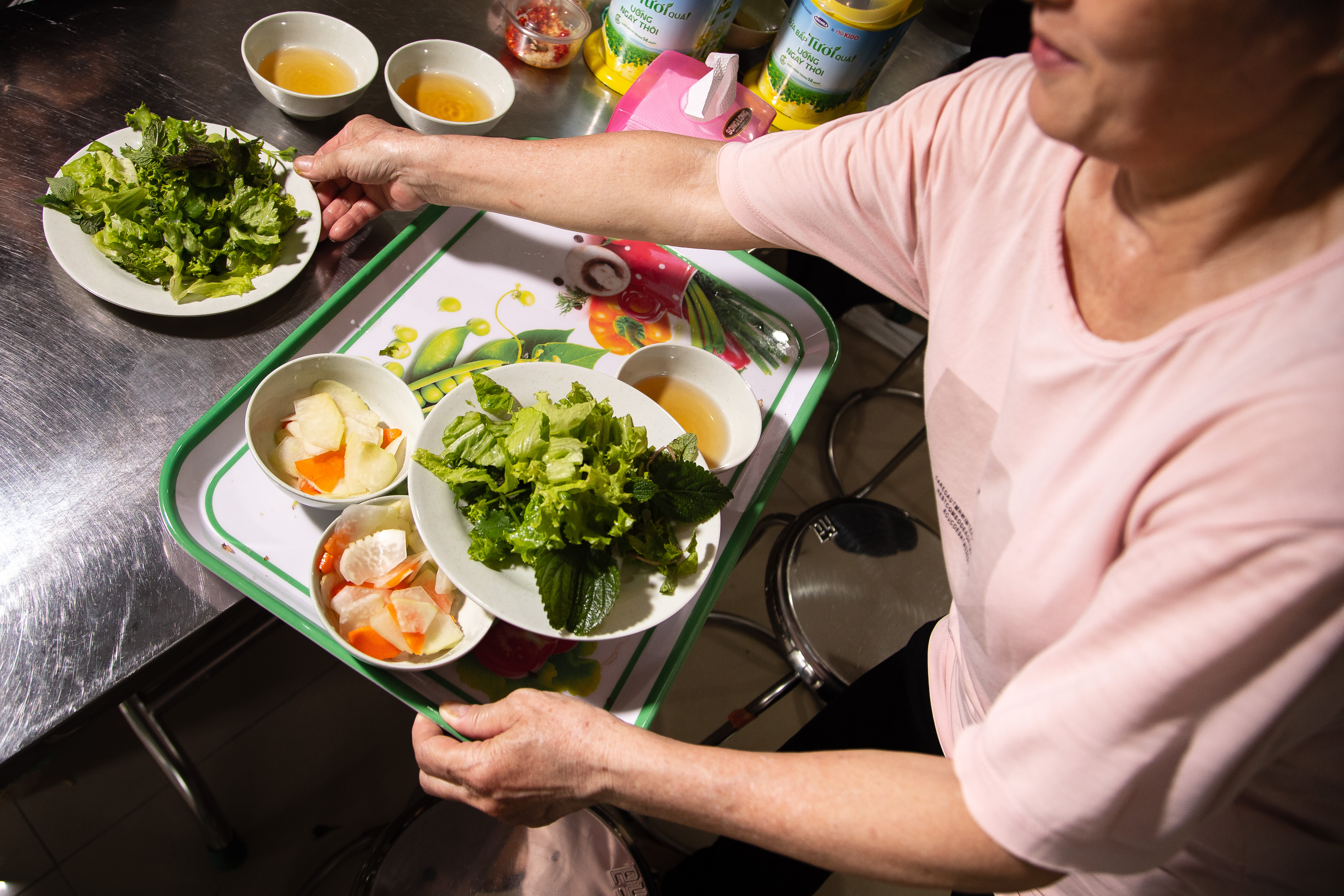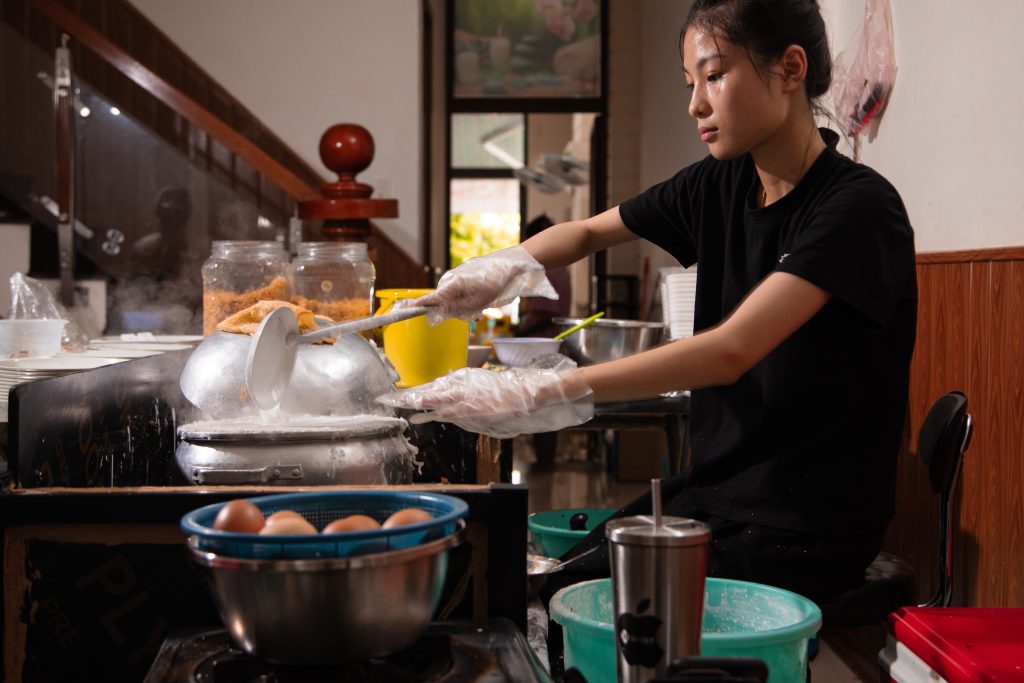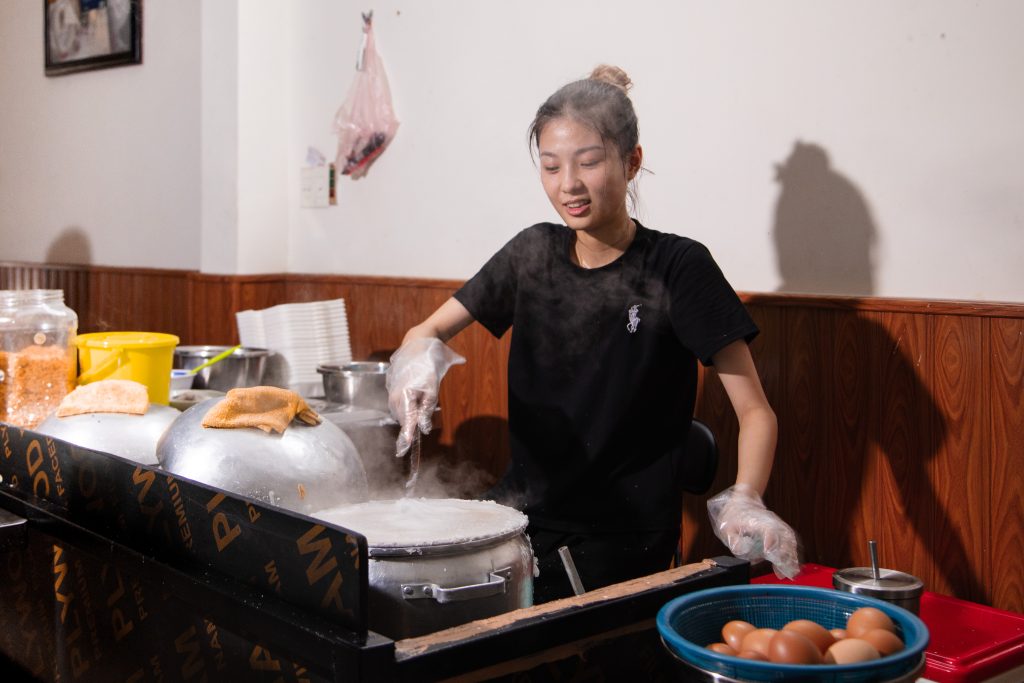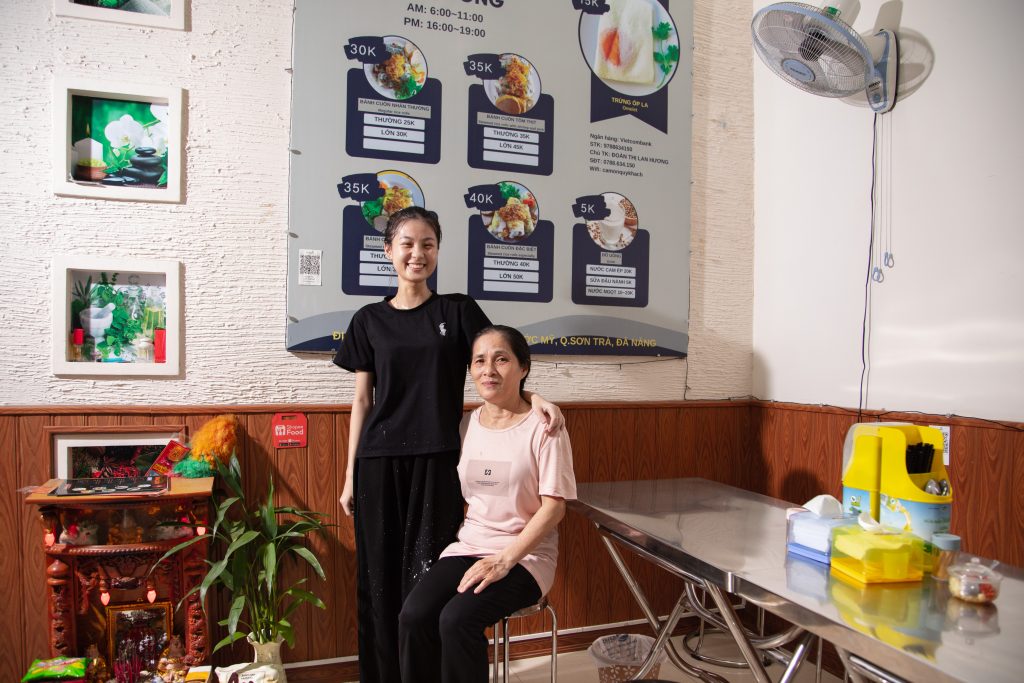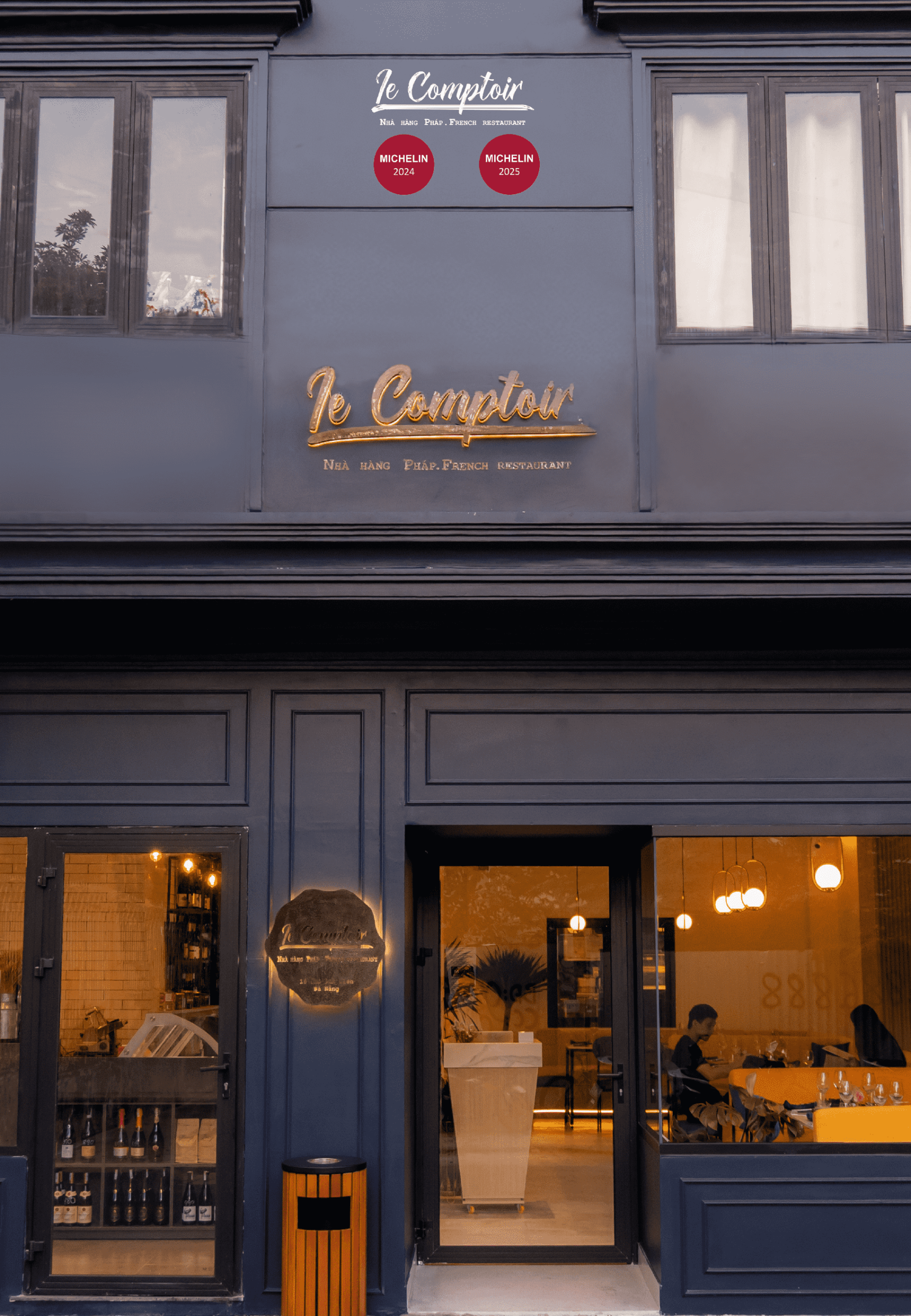One rainy day in Da Nang, I found myself in a quaint house in an active residential neighborhood. Adjacent to Chinh Huu Street and close to the busy Ho Nghinh Street and Phuoc My Market, a shophouse stands. Its presence can easily be overlooked by passersby, yet it holds a culinary wonder.
In front of the eatery is a stall of a fresh meat seller and an even smaller stall of another person selling Vietnamese coffee. I would mistake the house as theirs if it weren’t for the stand, because there are no loud advertisements, just a simple stand saying “Bánh Cuốn Nóng Hà Nội Tráng tay” with a photo of its simple offering: handmade steamed rice rolls, or bánh cuốn.
The process of making a steamed rice roll is essentially the same all throughout the country. A ladle of rice batter, made from ground rice, is poured onto a hot pan, meticulously spread across to make a thin, translucent sheet, and then carefully rolled, often with a filling already incorporated. After it is rolled, it is then dipped into a fish sauce concoction by the customer. There’s a quiet rhythm to the process, between heat, batter, and practiced hands that speaks to generations of culinary tradition.
Several historical sources reference the origins of steamed rice rolls from the Northern region of Vietnam. A particular village called Thanh Tri is especially popular and renowned for this dish. What is believed to have started centuries ago as a celebratory dish, perhaps even for the King and the royal prince, has been passed down from generation to generation.
This culinary evolution was particularly fueled by the widespread cultivation of rice, which made the primary ingredient, rice flour, readily available. Over time, many families developed their own heirloom recipes for bánh cuốn, leading to the diverse and delightful variations and presentations we see in the present day.
In the Philippines, I could think of a dish presented similarly, resonating with the concept of a delicate wrapper around a flavorful filling. It is Lumpiang Sariwa, or Fresh Lumpia, a fresh roll wrapped around a crepe-like sheet that contains stir-fried vegetables and often includes protein options like minced meat, shrimp, or tofu. Typically, the batter for our roll in the Philippines is made of regular flour and eggs, giving the wrapper a slightly different texture and flavor profile compared to the rice-based Vietnamese rolls.
Directly comparing it to Vietnam’s bánh cuốn, I would say that our fresh lumpia is more fitting as a snack or appetizer rather than a hearty breakfast or dinner meal. The sauce for the rolls also differs significantly. The sauce for fresh lumpia sauce has a richer, often thicker, consistency than the lighter, more aromatic fish sauce of bánh cuốn.
Going back to Viet Nam, the northern steamed rice rolls of Miss Huong are generously filled with finely chopped wood ear mushrooms and seasoned minced meat, and then topped with a lot of pork floss, adding a little texture to the smooth rolls. Served alongside these hot, rice rolls, are cold cuts called chả lụa (a Vietnamese pork sausage) and a fresh crispy vegetable salad.
This dish is not entirely new to me, as I have previously tried the steamed rice rolls prepared by Da Nang locals. The main difference I observed in Da Nang was that the primary protein was often served separately from the rolls. Additionally, those rolls were typically garnished with a generous amount of crispy fried shallots, which added a lot more crunch.
Miss Huong’s establishment, though physically located in Da Nang city, follows the culinary traditions and taste profile of the North, a direct reflection of her and her family’s roots in Vietnam’s bustling capital, Ha Noi. It is a cultural import, bringing a piece of Hanoi’s pride to Da Nang city.
What could be the difference between Miss Huong’s and the other rice rolls I have tried? you might find yourself asking. The answer lies in the dipping sauce. The dipping sauce typically served with Da Nang bánh cuốn, or at least the versions I have had a couple of times, strongly emphasized the aroma and intense flavor of fish sauce, resulting in a salty taste that dominates the palate.
In contrast, Miss Huong’s dipping sauce is remarkably lighter in taste and possesses a more delicate, less pungent scent. I would characterize the dipping sauce at Miss Huong’s as more diluted. It offers a subtle citric tang with a gentle sweetness, creating a harmonious and refreshing flavor profile that, for me, was a perfect combination. It complements the richness of the rolls without overpowering them.
As I tasted the dipping sauce on its own, I boldly declared I could drink it like juice. Jokes aside, you are free to customize the spiciness of your own dipping sauce with the fresh red chillies offered at each table, accompanied by some pickled papaya and carrots. I added a few chili slices to mine to enhance the taste.
I enjoyed my plate of bánh cuốn with a tall, iced glass of soy milk. I found the soy milk to be an excellent palate cleanser, flushing down the savory richness and any lingering spice from the chili in my mouth. The fresh salad also makes the hot rolls more appetizing. For me, it acts as a buffer for the next fresh hot rice roll of pork and shrimp to be devoured.
Given the exceptional taste and quality of the rolls, I naturally expected the place to have been operating for a long time, perhaps decades. But alas, I was surprised to learn that Miss Huong’s handmade rice rolls shop has only been operating for a only 3 years.
The price is remarkably affordable as well, making it accessible to almost anyone. A regular plate starts from a modest 30,000 VND (~1.15 USD), while a special plate, which includes all the delicious fillings like egg, meat, and shrimp, costs 40,000 VND (~1.53 USD). An additional omelet, perfect for an extra protein boost, is also available for just 15,000 VND, which is less than a dollar. This affordability, combined with the quality, truly makes it a hidden gem.
With the shop’s evident expertise and the exquisite quality of their main product, I assumed that the namesake, “Cô Hương,” would be of an older, perhaps even venerable, age. My expectation was to meet a middle-aged woman, as the name “Cô Hương”, which translates to ‘auntie‘ in English, implies a respectful address for an older female. However, my assumptions were wonderfully overturned. Miss Huong, the actual namesake, happens to be a young woman who, surprisingly, does not look like an auntie at all.
The namesake herself, radiating a humble yet confident aura, emerged from the kitchen to greet us, her simple bottoms splattered with rice flour batter. She is Cô Hương, they all confirmed to me. And I looked with genuine amazement.
She is tall, strikingly young, and energetic. She dons a warm smile, despite the smoke that must get to her eyes from the long hours of continuously making steaming hot rice rolls entirely by hand over the hot pans.
At this moment, I realized another difference between Miss Huong’s rice rolls and all the others I had tried. It is Miss Huong’s persistence in keeping a beloved traditional dish alive, not just by the impressive feat of making more than a hundred steamed rice rolls in a week, but also by showing that age is absolutely no deterrent to mastering and preserving a classic. Her youthful energy breathes new life into this historic dish.
Overall, the price of the dishes at Miss Huong’s delivers quality that extends far beyond its cost. This humble steamed rice roll shop of Miss Huong is truly an unmissable experience. It is a must-visit for both discerning locals and curious tourists alike who seek authentic flavors and inspiring stories in the heart of Da Nang.
Cô Hương’s Bánh Cuốn
Address: 30 Dương Tự Minh, An Hải Bắc, Sơn Trà, Đà Nẵng, Vietnam
Tel: 0788634150






